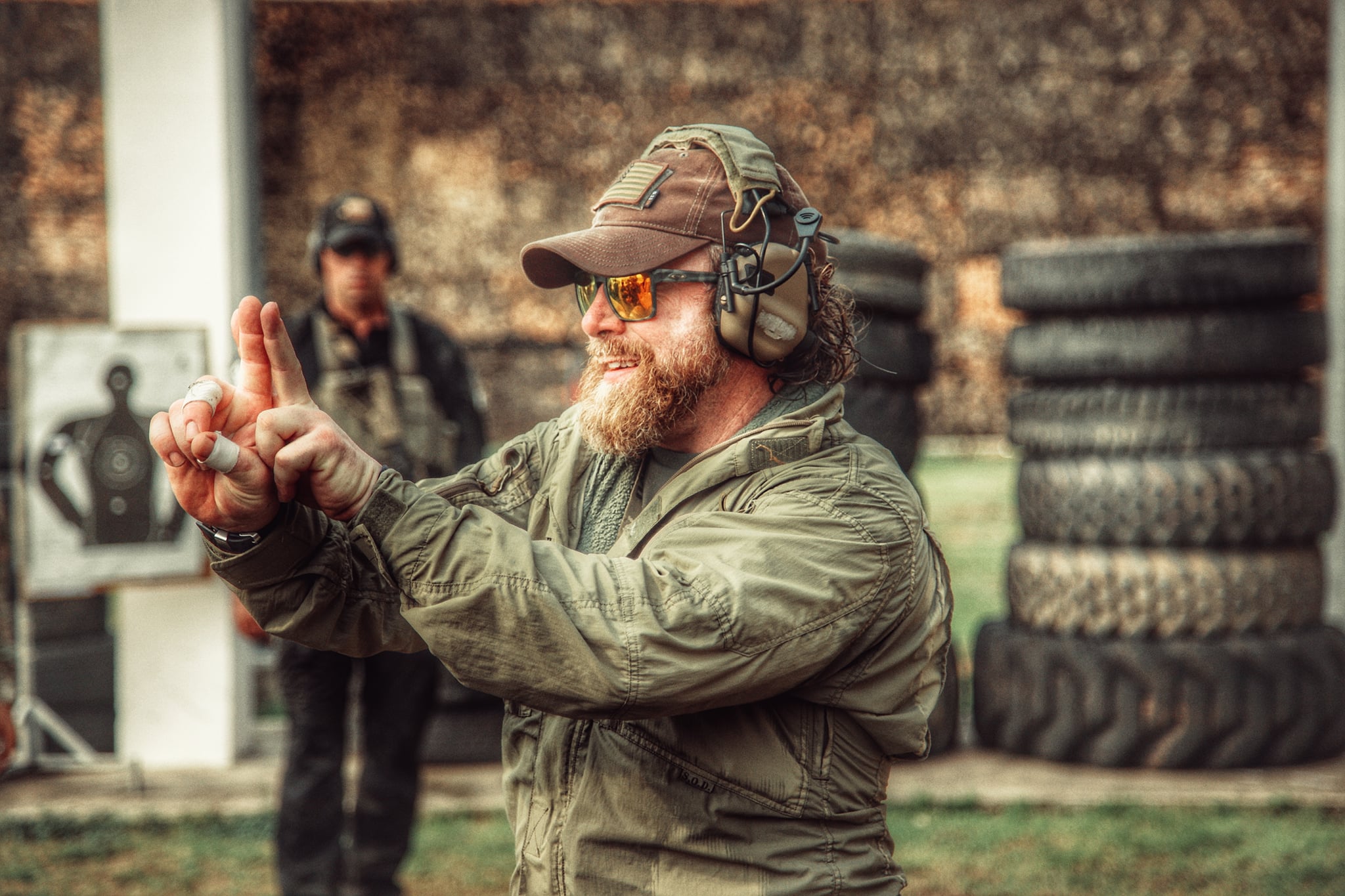The three dangers hidden inside the most common Shooting Tests and Evaluation Shooting Standards
I have seen that in social media there is again the trend to talk about shooting assessment tests, shooting standards and data that should serve to define the technical skills and the level of preparation that a subject has or should have in the use of firearms.
The tests for the maintenance and evaluation of standards are an absolutely common practice in the various Government Agencies, in the LE or MIL Units up to the SOF Special Units.
In the civilian market, the practice of carrying out shooting assessments by specific Tests to evaluate one’s abilities is poorly applied and is usually taken more as a “fun thing” than as a fundamental indicator of the actual state of our preparation.
As this is entirely optional, the civilians are not required to carry out any shooting assessment of their technical level, nor to maintain any standards of efficiency, even if they carry a firearm for defense.
When we talk about shooting TESTS or shooting STANDARD we are talking about exercises and defined actions in which some elements are examined as evaluation parameters, the exercises are then translated into numbers and then subsequently into data.
Up to here, everything is fine and the evaluation process would seem to be correct provided, however, that the correct elements and evaluation parameters are taken into consideration and above all related to the application field of interest. Indeed it would make no sense to evaluate, for example, the ability of a doctor according to tests that have parameters with which the abilities of an airline pilot are assessed.
Before analyzing what the errors are, however, we must define the conditions to which anyone carrying a firearm in the real context for work or defense is subject.
When we talk about the REACTION and the REACTIVE CAPACITY of a subject, we must understand what we are talking about.
The reactive capacity consists of two main elements:
Cognitive ability (75%) and mechanical ability (25% )
The Reactive Cognitive Capacity : is the ability of our brain to acquire as much information as possible from the environmental/sensory interaction, analyze them and rationalize them in the most compressed time possible and then SEND THE ORDERS to perform the most appropriate and effective actions at that given moment in that micro context in response to a that specific threat or danger .
The Reactive Mechanical Capacity : is the physical and biomechanical capacity that a subject has in carrying out sequences of defined actions subordinated to a decision-making process.
Having defined all this, we can move on to understand what are the 3 critical mistakes that make the current assessment tests in the field of firearms shooting poorly effective ( especially if we talk about “Defensive handgun” ).
DANGER 1 – The scarce relevance of the discriminating sequence with respect to the application
Usually in the application field of training with firearms, when it comes to carrying out a technical evaluation of the performance of a subject, a single main element is taken as a discriminant: THE TARGET.
Two fundamental parameters are then inevitably linked to this: TIME, understood as the execution time of the exercise or the action and the EFFECTIVENESS of the performance, understood as the accuracy of the shooting referred to the target.
This sequence consisting of a single element (the TARGET) and two parameters (TIME – ACCURACY) and it is perfect if referred to a specific and well-defined context/environment, that is: THE SHOOTING RANGE, as such, is therefore suitable and useful for any evaluation technique that concerns any performance linked to that type of context, such as SPORT SHOOTING.
It is precisely in the application of sports disciplines with firearms that the best performances are obtained in terms of the ratio between Speed and Effectiveness/Accuracy on the target.
A Competitive Shooter who undergoes assessment tests that respond to that sequence is therefore perfectly within the area of relevance of his assessment with respect to its application.
Instead if we take a subject from Law Enforcement , Military or a Civilian who carries a firearm every day for defense, and we submit them to evaluation tests, which always respond to the same sequence: TARGET – TIME – ACCURACY (such as 99% of those currently applied), their relevance to the application will be absolutely marginal and will not exceed 25% reliability, regardless of the result of the tests or the trials sustained.
This is due to the fact that the sequence of elements and parameters considered as discriminating for the evaluation of the
candidate/subject represents only one of the two fundamental aspects, which is the MECHANICAL execution
( Mechanical Reactivity ) and NOT the overall Reactive Capacity which is 75% made up of the cognitive sphere.
Not only, we should consider that the Mechanical Reactivity is subordinated to the Cognitive Reactivity in an essential way.
So we can say that the first critical error is represented by the sequence of elements and evaluation parameters which are only partially relevant to the application field in case of a subject of LE, Military, or in case of a Civilian who carrying a firearm for defense every day.
DANGER 2 – The omission of the two main reactive input
Most of the Evaluation Exercises/Tests related to defensive pistol shooting, come from sport shooting and therefore they have the Shooting Range as application environment and TARGET – TIME – ACCURACY as a discriminating sequence.
The majority of these tests are therefore based solely on the mechanics of the shooting and on the physical, technical and biomechanical capacity of the shooter, completely eluding his cognitive sphere.
The 100% of the tests in which the TIME parameter is present are based solely on auditory reactive input, which is only one of the 3 main input, minimizing the cognitive one and the visual ones.
To better understand what we are talking about, it is sufficient to relate the discriminating sequence and environment in which the evaluation takes place ( shooting range ) , with the conditions of the application to which anyone carrying a firearm in the real context responds.
All targets, regardless of the type of exercise or TEST, are always pre-known, thus excluding the ability to discriminate the threat / target, which is fundamental in the real context.
All the exercises that include a timer to measure the execution time of the Drill, are based solely on a reaction to a predefined, preconceived and prolonged auditory input (about 0.20 hundredths of a second).
The second error is therefore given by the fact that the two other main reactive input the visual and the cognitive are basically always omitted, considering that normally we acquire the environment 70% by our eyes ( during day light ) and considering that the cognitive reaction input ( cognitive associations ) is the main key of our reaction when we are involved or we need to face a LTS ( Life Threatening Situation ) in real context .
DANGER 3 – The mechanical speed up and the regression of Cognitive Reactivity
The third error related to the marksmanship tests (especially those with Pistol) consists of two aspects, the type of exercises that are carried out and the conditions in which we carry them out.
Since these are exercises that always involve the same actions, always the same execution, being therefore known and replicable in every detail, they can generate memory and therefore be implemented through simple repetition.
Let me explain better, if we take for example exercises such as the Bill Drill, El Presidente, 222 Drill or any other exercise in which we have a predetermined sequence of shots, a predetermined target/s, a predefined distance, a predefined reactive input (auditory input generated by the beep
of the timer ), we can say that the more times we repeat the exercises, the better the result will be, because we will carry out the drill faster and more accurately, what I usually call a Mechanical SPEED UP.
However, more times we will do it and the greater the detachment we will have with the reality that one day we might find ourselves facing.
This is indicated by simple logic and common sense, in the real context the variables are infinite and there is no action or condition equal to another.
In the real context, what will make the difference will mainly be the ability of our brain to carry out complex cognitive processes during a critical phase and an extremely high level of stress.
It is precisely here that the second part of the error originates.
If we talk about subjects who carry a firearm in the real context, the psychophysical conditions in which they carry out the TEST are essential and cannot be ordinary conditions (white condition) in which there is any alteration of some of the main parameters such as: heart rate, breathing cycle, cognitive overload to name a few.
We must also keep in mind that the shooting range being a controlled environment is an environment with very low
sensory/cognitive interaction, it does not produce variables in real time and therefore does not create conditions of immediate cognitive response, which are the basis of any critical event in which we will be involved in the real context.
The Example
At the end of all this I want to give you an example to help you better understand a very complex subject.
The example is given by the case of Commander and Pilot Chesley Burnett Sullenberger and of US Airways flight 1549, which was forced to land in the Hudson river.
From the moment of the bird strike to the moment of ditching in the Hudson River, approx. 208 seconds are passed, in which Commander “Sully” and First Officer Jeffrey Skiles had to make immediate decisions based on parameters never before addressed in any training projection performed or planned.
During the investigations, projections and simulations were carried out by other pilots to try to establish whether the commander “Sully” had actually operated correctly and there was no other possibility. Initially all the pilots and simulations showed that it would be possible to return to the airport of
LaGuardia or at Teterboro Airport, and therefore Commander Sully had in fact made the wrong decision.
This, however, happened because the pilots had been provided with all the parameters, including the total time available, so they had no variables to deal with and were not operating under conditions of high stress due to the real danger and consequent responsibility for the life of 155 passengers.
It was Sully himself who asked to evaluate two fundamental aspects, the fact that they did not have pre-known parameters such as the pilots of the simulations and the fact that they had to make irreversible decisions under strong psychophysical stress, which the pilots of the simulations did not have.
The overall reaction time available to the pilots during the simulations was therefore cut and the result was that none of them managed to complete a single landing in one of the two airports, confirming the absolute effectiveness and extraordinary ability demonstrated by Commander Sully in having analyzed, rationalized an enormous quantity of information, in an absolutely compressed time (a few seconds) and having taken irreversible decisions that actually saved the lives of 155 people.
REACTIVE DISSONANCE AND ITS DOMINANCE
At the end of my analysis of the current firearms shooting assessment tests, I want to make you reflect on what has been said because there could be a big discrepancy between the test result and what could instead be your actual reactive ability during a critical event.
Don’t get me wrong though, because this does not mean that the Shooting Evaluation Tests are not useful for those who daily carry a firearm in the real context.
Indeed they offer us important guidelines and references regarding our mechanical capacity, but at the same time , if properly used, they can also increase our shooting skills, especially our firearm manipulation.
What is absolutely important to understand and what we must consider are two main aspects:
1) The results of these tests do not represent our overall Reactive Capacity, because we are measuring and evaluating only the Mechanical Capacity which is 25% of the Reactive Capacity.
2) The Mechanical Reaction is always and only subordinated to the Cognitive Capacity and to a decision-making process
These two fundamental points and in particular the second, represent the strategic fulcrum of the whole process of analysis that we have carried out up to now, substantially through these two points the greatest danger emerges, namely that of Reactive Dissonance.
The Reactive Dissonance is a dynamic that is absolutely common, which foresees a consistent gap between one reactive ability and the other and can have a dominance in one or in the other.
MECHANICAL DOMINANCE
When we talk about Mechanical Dominance, since firearms training with cognitive-based still very little widespread, we are therefore talking about the most common condition.
In other words, we are talking about that condition which foresees a mechanical reactive capacity developed through perhaps years of specific training and a “primitive” cognitive reactive capacity because never been developed or enhanced through specific training.
The problem related to this type of dominance is given by the fact that the Mechanical Capacity is subordinate to the cognitive one, but if the cognitive one has not been developed, during a possible LTS it will almost certainly be destined for what I define a “cognitive overload”, that is the collapse (even partial) of the cognitive system, due to the enormous amount of information / interactions required during the event, the extremely compressed time of the decision-making process and obviously the “neuro-psychophysical” alteration due to stress.
More simply, if the cognitive system overloads, there will never be any Mechanical Reaction, because no one will ever send those orders to activate those biomechanical sequences and the weapon will remain inside the holster.
For the same reason, it will be useless to bring a mechanical reaction ( 5-7 yds from the target ) under a second, if it then takes you 10 seconds to complete a simple cognitive process with two associations (the lowest and most basic level of cognitive reaction ) before you can press the trigger or before being able to discriminate the target.
COGNITIVE DOMINANCE
When we talk about Cognitive Dominance, we are talking about a much rarer condition and it is usually based mainly on the natural individual abilities of a subject, and his aptitude for a more developed and faster cognitive reaction than the general average.
This is always because structured cognitive training is very little widespread, therefore having a subject who has a dominance in Cognitive Reactivity is rare and very often there is a dissonance because there is a technical deficit on the mechanical level due to an absence of training with the firearm .
In this case the problem is easier to solve, because it is objectively easier to construct the mechanical plane than the cognitive one, but in any case if there was a marked Dissonance and a substantial deficit on the mechanical and therefore technical level, the Reactive Capacity could in any case be compromised or ineffective.
More simply, if you have been extremely quick to carry out your cognitive process that led you to identify and evaluate the threat, then to the subsequent immediate decision-making process, but then you are slow and clumsy in drawing your firearm or ineffective in your shooting, the result will be the same as in the other condition. In any case, you will no longer have to worry about this, because it will no longer be your problem, it will in fact be the Coroner who will explain to your family where you went wrong.
I would like to conclude my writing by inviting you to reflect very carefully on what is the state of affairs today, everyone loves to write “the mind is the weapon and the firearm is only a tool”, but then when they go to the shooting range evidently they forget about it and train only the finger and not the mind. This happens because it is easier to train the finger and does not require having to deal with one’s conscience in terms of ability and preparation.
I want to greet you by mentioning two concepts that I find fantastic and that come from two other Trainers of which I have a deep esteem:
Thinkers before shooters – Travis Haley
Don’t be a “Gunfighther”… Be a fighter with a Gun – Todd Fossey



